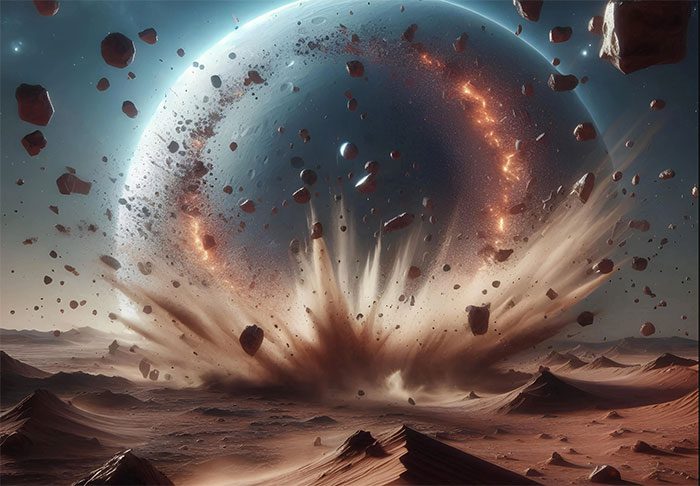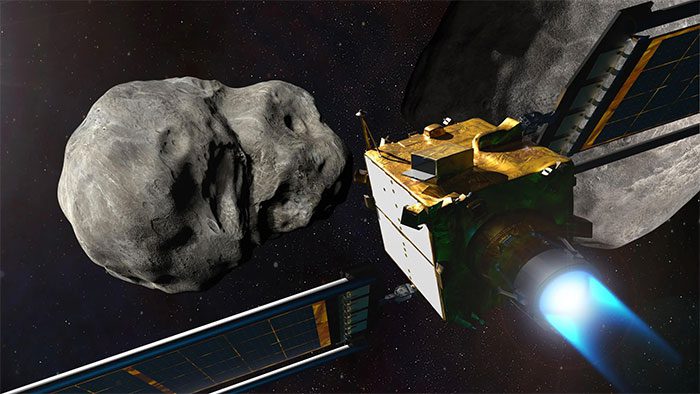The daring dive of NASA’s spacecraft named DART has had such a profound impact that even our neighboring planet has felt the effects.
A new analysis reveals that some rocks from the asteroid Dimorphos, which NASA’s DART collided with in 2022, may be on a collision course with Mars, our neighboring planet, according to Science Alert.

Impact craters up to 300m in diameter could appear on the red planet due to the indirect effects of DART’s dive – (AI graphic)
DART is the spacecraft used in the Double Asteroid Redirection Test (DART), where the smaller asteroid in the Didymos-Dimorphos pair near Earth was directly impacted by DART.
This test is based on a hypothetical scenario that Dimorphos could potentially collide with Earth, aiming to prepare for real threats in the future.
Since then, NASA and its partner space agencies have been closely monitoring this impact.

DART plunging into Dimorphos – (Image: NASA).
A research team led by astronomer Marco Fenucci from the European Space Agency (ESA) and Albino Carbognani from the National Institute of Astrophysics in Italy has indicated the possibility of Mars “taking a hit” in a report published in the scientific journal Monthly Notices of the Royal Astronomical Society.
Their investigation focused on numerical simulations of the collision, revealing potential impacts from now until 20,000 years in the future, particularly concentrating on 37 rocks identified by the Hubble Space Telescope, ranging in size from 4 to 7 meters.
You will be relieved to know that Earth is safe. Some rocks come close, but not close enough to pose a threat.
However, 4 of these rocks will come close enough to Mars to potentially collide with its surface – 2 rocks within the next 6,000 years and 2 others in another 15,000 years.
If these small rocks were to head towards Earth, they would quickly be burned up by the atmosphere and likely disintegrate long before reaching the surface. Mars, however, is not protected by a substantial atmosphere like Earth.
Calculations suggest they could create small craters up to 300 meters in diameter on our neighboring planet.
This does not seem to be a major concern at the moment, as there is currently no one on Mars.
However, if space agencies deploy missions targeting Mars in the future, they will need to consider the risk posed to spacecraft at the time these rocks intersect with Mars’ orbit.


















































